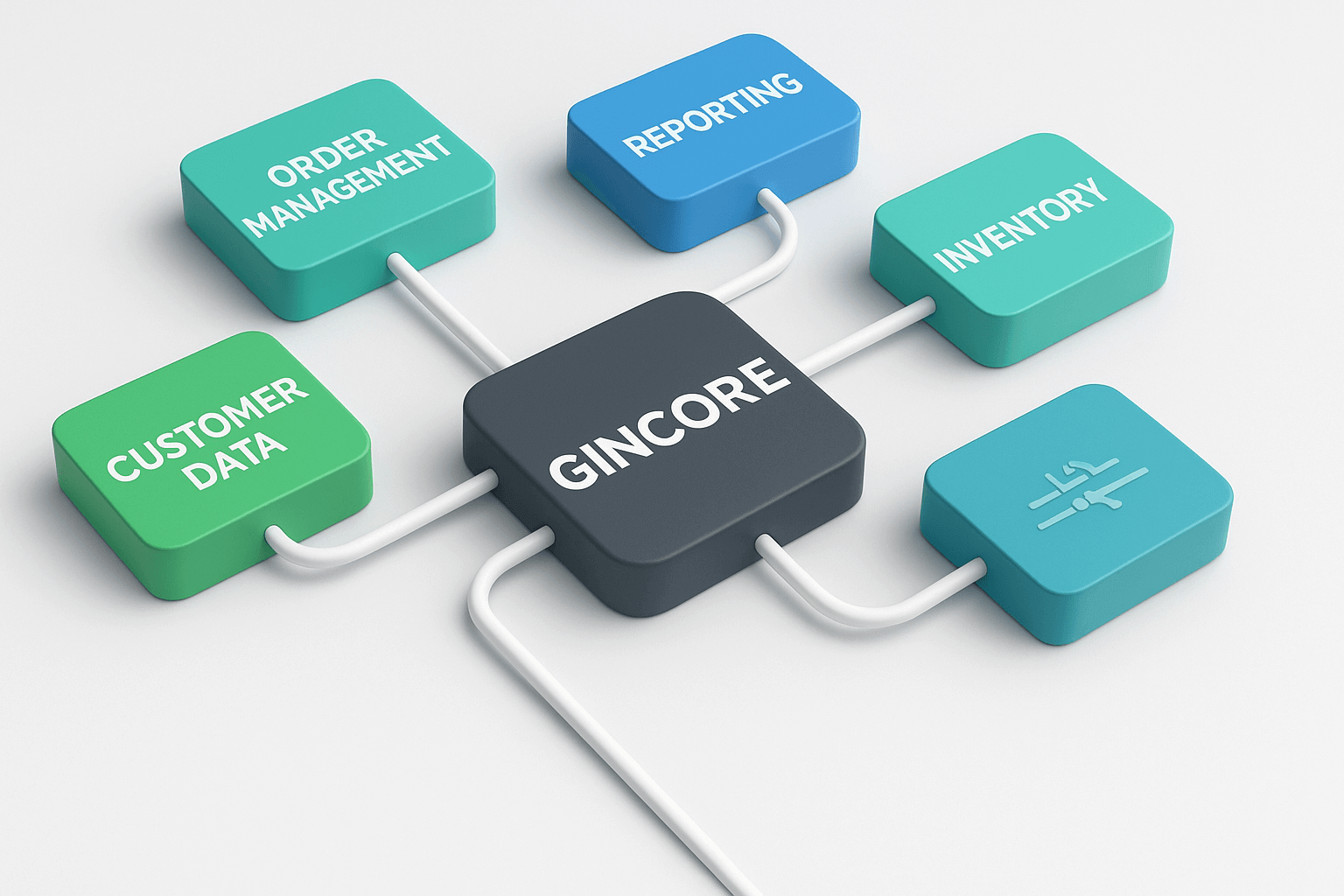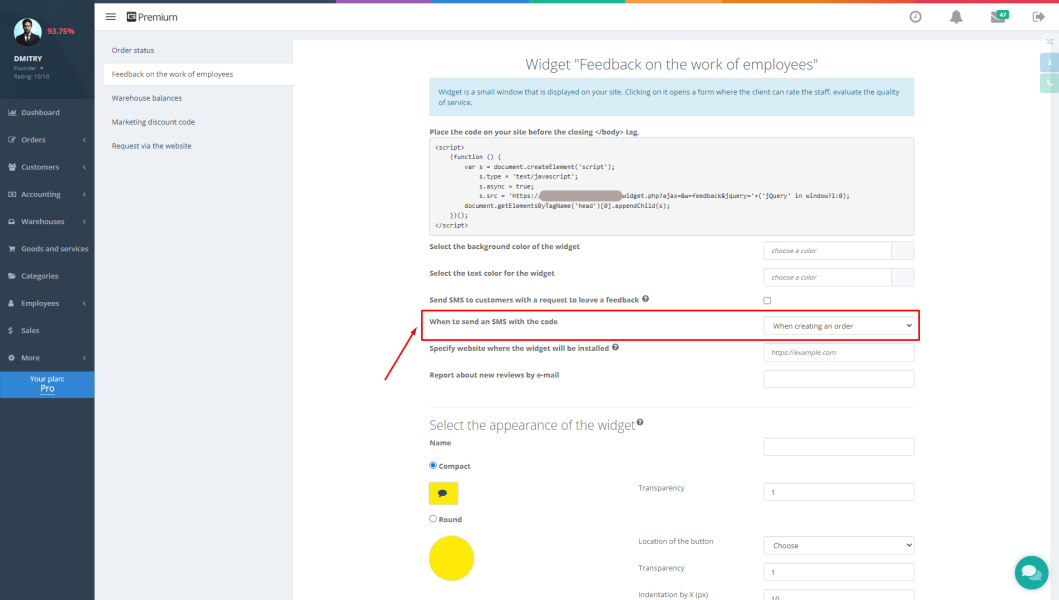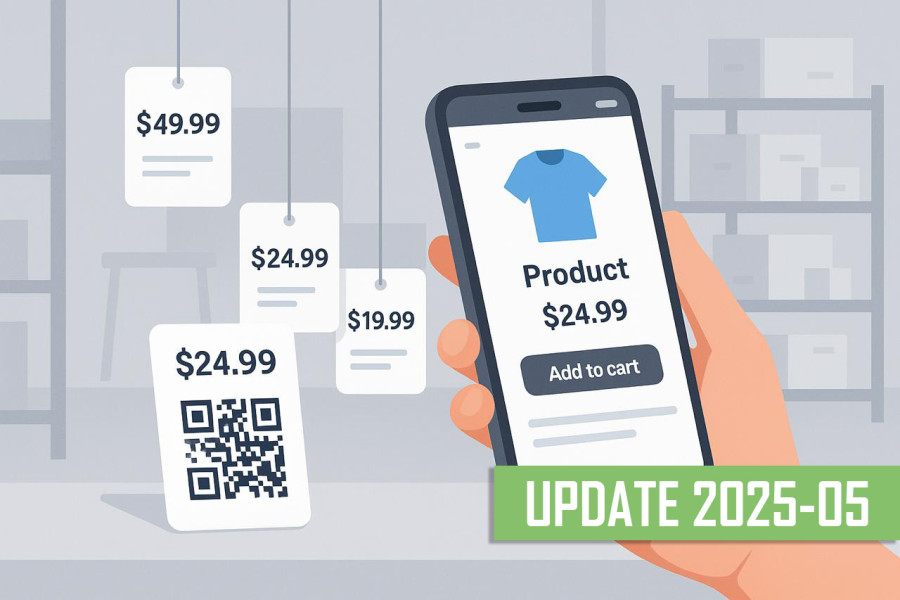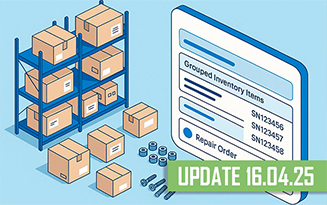That sinking feeling when you look at the sales numbers? When they’re not just flat, but actually dipping? You're not alone. Many businesses, from bright-eyed startups to seasoned enterprises, hit this wall, wondering why their best efforts aren't translating into results. In today's fast-moving market, getting to the "why" behind a sales slump isn't just important – it's the critical first step towards a powerful turnaround. After all, you can't fix what you don't understand.
As the "Low sales research" document rightly points out, "The contemporary retail and eCommerce landscape presents a complex picture... success is increasingly a function of strategic acuity and operational excellence rather than solely relying on market momentum." This isn't just about weathering a temporary storm; it’s about peeking under the hood to find those underlying issues that could be quietly sabotaging your potential.
This comprehensive guide will walk you through the most common culprits behind low sales, drawing on industry insights and expert research. More importantly, we'll explore actionable strategies – real things you can do – to address these challenges, breathe new life into your sales engine, and pave the way for lasting success. And yes, we’ll touch upon how smart business management tools can become a surprisingly powerful ally in this journey.
1. The Shifting Sales Landscape: Why Old Tactics Might Be Failing
The business playground has changed. The way customers find you, check you out, and decide to buy (or not buy) has undergone a seismic shift. Digital transformation isn't just a buzzword anymore; it's the reality, coupled with customers who expect more and global competition just a click away. It means that strategies that brought in sales like clockwork five, or even two years ago, might now be gathering dust.

"The pace of change has never been this fast, yet it will never be this slow again."
If your sales are low, it might be because your approach hasn't quite caught up with:
- Digital-first customer journeys: Are you truly visible where your customers are looking, scrolling, and clicking online?
- The cry for personalization: Generic, one-size-fits-all messages? They're the fastest way to get ignored. Customers expect you to "get" them.
- The experience economy: It's not just what you sell, but how you sell it. Often, the overall experience trumps price.
- Data-savvy competitors: Businesses leveraging analytics are like teams with a better playbook; they’re making smarter, faster decisions.
Getting your head around this new playing field is crucial before we dive into the nitty-gritty of what might be going wrong inside or outside your business.
2. Critical Internal Factors Dragging Down Your Sales
More often than not, the trail of breadcrumbs leading to low sales starts right inside your own company. A good, honest look inwards can reveal areas crying out for attention. As the "Low sales research" document emphasizes, "Diagnosing the precise reasons for low sales necessitates a holistic view, examining internal capabilities..." Let's unpack some of these.

2.1. Your Product or Service Isn't Hitting the Mark
This one's fundamental. If what you’re offering doesn't truly solve a customer's problem or light up their desires, all the clever marketing or sales wizardry in the world won't build sustainable success. Think of it like trying to sell ice to someone in a blizzard.
- Poor Product-Market Fit: Is there a real, burning demand for what you offer? Or have customer needs subtly shifted while your product stood still?
- Quality Gremlins: Are little (or big) defects, performance hiccups, or usability frustrations leading to those dreaded negative reviews and dwindling repeat business?
- The "Me-Too" Trap (Lack of USP): In a bustling marketplace, if your offering just blends into the background, why should customers pick you out of the lineup? What makes you genuinely different, your Unique Selling Proposition?
- Feeling a Bit Dated? (Outdated Features): Competitors might be rolling out shiny new features that make your offering look like last year's model.
Solution Snapshot:
- Become a feedback detective: actively gather customer thoughts (surveys, reviews, casual conversations).
- Keep the innovation engine humming: invest in R&D and product evolution.
- Shout your USP from the rooftops (figuratively speaking!): clearly define and communicate what makes you special.
2.2. An Ineffective or Non-Existent Sales Strategy
Having a sales team is one thing; having a roadmap they can actually follow is another. Without a clear, documented, and consistently applied sales strategy, efforts can feel scattered, like an orchestra without a conductor, leading to inefficiency and missed notes (sales!).
- Selling to Shadows (Undefined Target Audience): Trying to be everything to everyone usually means you end up connecting deeply with no one.
- A Fuzzy Sales Process: Do your salespeople have a clear path, a set of steps to guide a prospect from "just looking" to "happily bought"? Is that path optimized, or full of potholes?
- Flying Blind (Lack of Sales Goals & KPIs): Without clear, measurable targets, how do you know if you're winning, losing, or just treading water?
- Leaky Lead Funnel (Poor Lead Generation & Qualification): Are you attracting enough of the right kind of leads? Or is your team bogged down with prospects who were never really going to buy?
Solution Snapshot:
- Paint a picture of your ideal customer: develop detailed buyer personas.
- Map out your sales highway: define your ideal sales process and get everyone on board with training.
- Set SMART goals: Specific, Measurable, Achievable, Relevant, Time-bound targets for your sales.
2.3. Marketing Misfires: Reaching the Wrong Audience or None at All
Marketing and sales? They’re like two rowers in a boat – they need to paddle in sync. If your marketing isn't effectively bringing in and warming up potential customers, your sales team is left trying to row upstream with one oar.
- Shouting in an Empty Room (Wrong Marketing Channels): Are you spending your marketing budget on platforms where your ideal customers simply don't hang out?
- A Muffled Message (Weak Messaging): Does your marketing copy truly speak to your audience's pain points and dreams? Does it shout "value!" or just whisper?
- The Invisible Business (Poor Online Presence): An outdated website, being buried on page 10 of Google (low SEO), or a ghost town social media presence can make you practically invisible. As the "Google. Требования к SEO-статье для топа." document suggests, "Creating high-quality content is paramount" – and that content needs to be found!
- The Content Void (Ignoring Content Marketing): Helpful, valuable content isn't just nice to have; it builds trust and acts like a magnet for organic traffic. Are you sharing your expertise?
- Running on Fumes (Insufficient Marketing Budget): Effective marketing isn't free; it's an investment that needs adequate fuel.
Solution Snapshot:
- Put on your anthropologist hat: conduct thorough market research to understand where your audience really spends their time.
- Craft messages that pop: focus on benefits, not just features, and make them compelling.
- Build your digital storefront: invest in SEO and a professional, user-friendly website that works beautifully on all devices.
2.4. The Price Isn't Right: Value Perception and Competitive Positioning
Ah, pricing – it's a delicate dance. Price too high, and you might scare off perfectly good customers. Price too low, and you risk devaluing your amazing offering or, worse, running on wafer-thin margins.
- Sticker Shock (Overpricing): Is your product genuinely offering enough superior value to justify that premium price tag compared to what else is out there?
- The Bargain Bin Trap (Underpricing): Are you accidentally leaving money on the table? Or, even more subtly, creating a perception that "cheap" means "low quality"?
- The Hidden Fee Fiasco (Confusing Pricing): Nobody likes nasty surprises at checkout. Transparency is your friend here.
- The Value Whisper (Failure to Communicate Value): Customers need to clearly understand why your product or service is worth every penny they're paying.
Solution Snapshot:
- Do your homework: conduct competitor pricing analysis regularly.
- See through your customers' eyes: understand the perceived value of your product from their perspective.
- Don't be afraid to experiment (wisely!) with different pricing strategies and models.
2.5. Neglecting the Customer Experience (CX)
Here’s a modern business truth: customer experience can often be a more powerful magnet for sales than price or even the product itself. A clunky, frustrating, or indifferent CX can send sales plummeting and stunt growth before you know it.
- The Obstacle Course Purchase (Difficult Buying Process): Is your website a maze? Is checkout like solving a puzzle? Make it smooth, make it easy.
- The "We Don't Really Care" Vibe (Poor Customer Service): Slow responses, unhelpful staff, or radio silence after a purchase? That’s a recipe for losing customers for good. The "Low sales research" document rightly flags "gaps in customer experience" as a critical issue.
- Feedback Falling on Deaf Ears (Ignoring Customer Input): Not listening to or, crucially, acting upon complaints and suggestions tells customers you don't value their business or their insights.
- The Jekyll & Hyde Experience (Inconsistent Touchpoints): The experience should feel consistently good, whether a customer interacts online, in-store (if you have one), or over the phone.
Solution Snapshot:
- Walk in your customers' shoes: map their entire journey with you to spot those painful friction points.
- Invest in your front line: train customer-facing staff to be empathy champions.
- Make it personal (in a good way!): a robust CRM system can be a game-changer here. For instance, a system like Gincore can help centralize all that precious customer data, track every interaction, and even automate thoughtful follow-ups, ensuring no customer feels like just another number.
2.6. Inefficient Sales Processes & Operations
Are your internal processes smooth and streamlined, or more like a tangled ball of string? Clunky, outdated, or overly manual processes can slow down your sales cycle, frustrate your team, and cause opportunities to slip through your fingers.
- The Admin Quicksand (Manual Data Entry): Your salespeople are closers, not clerks. If they're drowning in admin, they're not selling.
- Silo Headaches (Lack of Inter-Departmental Coordination): When sales, marketing, and operations aren't talking or are on different pages, the customer often feels the bumps.
- The "Oops, Out of Stock!" Disaster (Poor Inventory Management): For businesses selling physical products, few things kill a sale faster than not having the item. Conversely, too much stock ties up cash.
- Running on Old Tech (Inadequate Tools): Still wrestling with spreadsheets where modern software could automate and illuminate?
Solution Snapshot:
- Automate, automate, automate (the repetitive stuff, anyway!).
- Build bridges, not walls, between departments. Communication is key.
- Get a grip on your goods: implement robust inventory management. This is another area where integrated business management software like Gincore really shines. Imagine having real-time inventory tracking, order management, and supplier relations all in one place, preventing those lost sales due to operational hiccups.
2.7. An Unmotivated or Ill-Equipped Sales Team
Your sales team? They're your frontline heroes. But if they're not feeling motivated, aren't well-trained, or lack the right tools and knowledge, even the best product can struggle.
- "Umm, I'm Not Sure..." (Lack of Product Knowledge): If salespeople can't confidently sing your product's praises and answer questions with ease, they won't inspire confidence in buyers.
- Selling on a Prayer (Poor Sales Skills): Selling is a craft. It requires training in listening, questioning, negotiation, closing, and building genuine relationships.
- The Morale Drain (Low Motivation or Burnout): Unrealistic targets, a thankless environment, or a negative company culture can dim the brightest sales stars.
- Fighting with Flintlocks in a Digital Age (Inadequate Sales Tools): Give your team the modern CRM and sales intelligence tools they need to succeed.
Solution Snapshot:
- Sharpen their skills: invest in regular sales training and deep product education.
- Light a fire (the good kind!): set realistic goals and offer incentive programs that actually motivate.
- Cultivate a winning environment: foster a positive, supportive, and appreciative work culture.
- Arm them for success: equip your team with modern sales enablement tools.
2.8. Failure to Adapt and Innovate
The market doesn't stand still, and neither can your business. Companies that dig their heels in and resist change, or simply stop trying new things, risk becoming yesterday's news.
- Ignoring the Crystal Ball (Missing Market Trends): Are you keeping a keen eye on emerging tech, shifts in what your customers want, and new ways of doing business?
- The "But We've Always Done It This Way" Syndrome (Resistance to Change): A culture that fears or fights change will always struggle to keep up, let alone lead.
- The Innovation Standstill (Not Investing in Progress): Stagnation is the silent killer of growth. This applies to your products, your processes, and how you market yourself.
Solution Snapshot:
- Never stop learning: foster a culture of continuous improvement and curiosity.
- Regularly give your strategy a health check: review and update your business plan.
- Dare to try: encourage smart experimentation and calculated risk-taking.
3. External Pressures Impacting Sales Performance
Sometimes, despite your best efforts internally, forces outside your direct control can throw a wrench in the works. You can't always change these external tides, but you can learn to navigate them more effectively.
3.1. Intensifying Competition
It feels like new competitors pop up every day, doesn't it? And your existing ones are constantly upping their game. Standing out from the crowd is an ongoing challenge.
- The Race to the Bottom (Price Wars): Competitors might slash prices, putting a squeeze on your margins and forcing tough decisions.
- The New Kid on the Block (Innovative Competitors): Others may launch superior products, offer slicker services, or introduce entirely new business models that shake things up.
- Outshouted and Outmarketed (Better Marketing by Competitors): If your competition is doing a better job of being seen and heard, they're likely capturing customers that could have been yours.
Solution Snapshot:
- Keep your friends close, and your competitors closer: continuously monitor what they're up to.
- Double down on what makes you unique: focus on your distinct value proposition.
- Build a loyal tribe: strong customer relationships can make you less vulnerable to price wars.
3.2. Economic Headwinds and Market Volatility
Recessions, inflation, shifts in consumer spending power, or even industry-specific downturns – these larger economic waves can lead to a general chilling of demand.
- Wallets Snapping Shut (Reduced Consumer/Business Spending): When times are uncertain, "nice-to-haves" often get cut before "need-to-haves."
- The Supply Chain Maze (Disruptions): These can affect not just whether you can get your products/materials, but also how much they cost.
- The Ever-Changing Rulebook (Shifting Regulatory Landscape): New laws or regulations can sometimes create new hurdles for how you operate.
Solution Snapshot:
- Don't put all your eggs in one basket: diversify offerings or target markets if feasible.
- Focus on undeniable value and keeping the customers you have.
- Run a tight ship: maintain lean operations to better weather financial storms.
3.3. Evolving Consumer Behavior and Expectations
What wowed customers yesterday might elicit a shrug today. Their behaviors, expectations, and values are constantly on the move.
- The Conscientious Consumer (Demand for Sustainability & Ethics): Increasingly, people want to buy from brands whose values mirror their own.
- The Digital Default (Shift to Online & Mobile): If you're not easily found, explored, and bought from online (and especially on mobile), you're missing a massive slice of the pie.
- The "I Want It Now" Culture (Desire for Instant Gratification): Patience is a virtue many customers no longer possess in abundance. They expect fast responses, quick shipping, and instant access.
Solution Snapshot:
- Keep your finger on the pulse: stay attuned to social, cultural, and technological trends.
- Embrace your digital self: invest seriously in your online presence and mobile optimization.
- Need for speed: streamline everything you can for faster, more efficient service.
4. The Data Blind Spot: Flying Without a Sales Compass
Imagine trying to navigate a ship in foggy weather without a compass or GPS. That’s what running a business without paying attention to data can feel like. It's one of the most common, yet often overlooked, reasons for low sales. If you're not tracking, analyzing, and acting on key sales and marketing numbers, you're essentially making decisions in the dark.

- Ignoring Your Dashboard (Not Tracking Key Performance Indicators - KPIs): Vital signs like conversion rates, customer acquisition cost (CAC), customer lifetime value (CLTV), sales cycle length, and website traffic tell you the health of your sales.
- Data Trapped in Silos: When important information is locked away in different, disconnected systems, you never get the full picture.
- Missing the Clues (Inability to Identify Trends or Patterns): Without proper analytics, you can't see what's working, what's flopping, or where golden opportunities might be hiding.
- Decisions by "Gut Feeling": Experience is valuable, no doubt. But in today's complex market, relying solely on intuition when data can offer concrete insights is a risky game.
Solution Snapshot:
- Know your numbers: identify and consistently track the KPIs that truly matter for your business.
- Bring your data together: implement a centralized system for data collection and analysis. This is where business management platforms like Gincore are invaluable. They offer robust reporting and analytics, turning all that raw data from sales, customers, and inventory into clear, actionable insights – like finally having that GPS in the fog.
- Teach your team to speak "data": train them to understand the numbers and use them to make smarter strategic choices.
| Metric | Why It's a Critical Signal for Diagnosing Low Sales |
|---|---|
| Sales Revenue | The ultimate bottom line; the clearest sign of sales health. |
| Number of New Leads | Shows if your marketing & lead generation efforts are actually working. |
| Lead-to-Opportunity Ratio | Tells you about lead quality and how well you're initially qualifying. |
| Sales Conversion Rate | The magic number! Percentage of opportunities becoming customers; shows sales team effectiveness. |
| Average Deal Size | Tracks the value of each sale; a dip can indicate issues with upselling or product mix. |
| Sales Cycle Length | How long it takes to close a deal; if it's getting longer, inefficiencies might be creeping in. |
| Customer Acquisition Cost (CAC) | How much you're spending to get each new customer; if it's too high, profits suffer. |
| Customer Lifetime Value (CLTV) | Predicts the total profit you'll make from an average customer; crucial for sustainable growth. |
| Website Traffic & Engagement | For online businesses, this is your digital footfall and window shopping. |
| Customer Churn Rate | How quickly customers are leaving you; a high churn is a major red flag. |
5. Revitalizing Your Sales: A Strategic Blueprint for Growth
Okay, so identifying the reasons for low sales is like a doctor diagnosing an illness – essential, but it's only half the battle. The other half is the treatment plan. The "Low sales research" document champions "a multi-pronged approach centered on strategic adaptation, technological leverage, and unwavering customer-centricity." Let's make that actionable.
Step 1: Diagnose with Data - Understand Your Specific Bottlenecks
Before you start changing everything, use your data to pinpoint where the real problems lie. Don't just guess. Dive into your sales funnel reports, read customer feedback with an open mind, scrutinize your website analytics, and look at your financial statements. Which of the reasons we've discussed are screaming out from your data?
Step 2: Re-Align Your Product, Pricing, and Positioning
Armed with insights (and maybe a bit of courage!), it's time to refine:
- Your product/service: Tweak it, improve it, make sure it’s what customers actually want and need now.
- Your pricing strategy: Does it reflect true value? Is it competitive? Is it clear?
- Your Unique Selling Proposition (USP) and brand message: Sharpen it until it’s crystal clear why you’re the best choice.
Step 3: Supercharge Your Marketing & Sales Funnel
- Find your people: Identify the most effective marketing channels to reach your specific target audience.
- Create content that connects: Develop compelling articles, videos, posts – whatever your audience loves – that solve their problems and showcase your solutions.
- Make your website a conversion machine: Clear calls-to-action, easy navigation, lightning-fast loading.
- Plug the leaks: Refine your lead generation and qualification process so good leads don't escape.
Step 4: Elevate the Customer Experience to Foster Loyalty
- Smooth out the journey: Map every customer touchpoint and iron out any frustrating wrinkles.
- Turn your team into CX champions: Train them in the art and science of exceptional customer service.
- Make it personal: Use data to personalize interactions and communications – show them you know them.
- Listen, really listen: Actively solicit customer feedback and, crucially, act on it.
Step 5: Empower Your Sales Team & Streamline Processes
- Invest in your people: Provide ongoing training on product knowledge, sales techniques, and how to use their tools effectively.
- Set goals that inspire, not intimidate: Clear, motivating targets and incentives make a difference.
- Free them up to sell: Automate those soul-crushing administrative tasks.
- Teamwork makes the dream work: Ensure sales, marketing, and operations are all rowing in the same direction.
Step 6: Embrace Technology for Efficiency and Insight
This is where smart tools become your superpower. Modern business management software can centralize your scattered data, automate clunky workflows, and provide insights that used to be the preserve of big corporations.
6. How Gincore Can Help You Overcome Sales Hurdles
Let's be honest, tackling a sales slump often means getting better systems in place – for managing your customers, your inventory, your orders, and just the general day-to-day operational dance. This is precisely where a comprehensive solution like Gincore can feel like a breath of fresh air. Instead of trying to make a patchwork of different, disconnected tools play nicely together (which they rarely do!), Gincore offers an integrated platform specifically designed for businesses like service centers, repair shops, rental businesses, and retailers.

Think about how Gincore addresses some of the core headaches we've discussed:
- The Problem: Tangled Sales Processes & Customer Data All Over the Place (Remember sections 2.5 & 2.6?)
The Gincore Solution: Gincore's CRM features are like a central nervous system for your customer interactions. You can track every conversation, manage leads methodically, and automate those important follow-ups. This means a more consistent experience for your customers and fewer precious leads slipping through the cracks. Plus, its order management system smooths out everything from creating a quote to sending an invoice and getting paid, cutting down on manual work and those pesky errors.
- The Problem: "Sorry, It's Out of Stock" – Inventory Nightmares Killing Sales (See section 2.6)
The Gincore Solution: With Gincore's inventory management, you get a crystal-clear, real-time view of what you have, where it is, and when you need more. You can manage suppliers, track parts down to the last screw, and even automate reordering. Say goodbye to disappointing customers and missed sales due to preventable stockouts.
- The Problem: Making Big Decisions Based on Hunches, Not Hard Data (See section 4)
The Gincore Solution: Gincore provides powerful, easy-to-understand reporting and analytics. You can finally see, at a glance, how your sales are trending, which products or services are your true stars, monitor technician productivity (a must for service businesses!), and gain deep insights into what your customers are really doing. This data turns into your roadmap, empowering you to make informed, confident decisions to boost sales.
- The Problem: A Team That's Bogged Down or Lacking the Right Tools (Hello, section 2.7!)
The Gincore Solution: By automating many of those time-consuming manual tasks and providing a clean, intuitive interface for managing jobs, customer information, and schedules, Gincore helps your team become more efficient and focused on what they do best – serving customers and closing sales. This often leads to happier staff and higher productivity.
- The Problem: Different Parts of the Business Feeling Disconnected (Service, Sales, Billing Not Talking)
The Gincore Solution: Gincore is built to bring it all together. It integrates various vital aspects of your business – from scheduling repairs or services, managing spare parts for jobs, handling rentals smoothly, to point-of-sale transactions and financial reporting – all under one unified system. This holistic view isn't just neat; it dramatically improves efficiency and customer service, which directly fuels your sales potential.
By streamlining your operations, helping you build stronger customer relationships, and shining a light on crucial data, Gincore doesn't just help you patch up leaks; it helps you build a more robust, efficient, and sales-driven business from the ground up. It’s less about just software, and more about a partner in optimizing your entire business flow.
7. Conclusion: Turning Sales Slumps into Growth Opportunities
Low sales? It’s a tough pill to swallow, no doubt. But within that challenge lies a golden opportunity: a chance to take a hard, honest look at your business and make changes that can be truly transformative. By systematically figuring out what’s going on internally and externally, committing to letting data guide your decisions, and strategically using technology to your advantage, you can turn that frustrating sales downturn into a powerful springboard for growth and long-term resilience.
Remember those core pillars we talked about from the "Low sales research" document: "strategic adaptation, technological leverage, and unwavering customer-centricity." These aren't just fancy words. Embrace them, be proactive, stay agile, and watch things change. The path to revitalized sales always starts with understanding, quickly followed by decisive, informed action. You've got this!
8. Frequently Asked Questions (FAQ)
Q1: How quickly can I *really* expect to see an improvement in sales after making these changes?
If only there were a magic wand! The truth is, it varies wildly. It depends on your specific issues, your industry, and how much focused effort you put in. Some quick wins – like tweaking your website's call-to-action or running a super-targeted promotion – might show results in weeks. Deeper shifts, like a full product revamp or rebuilding a damaged brand reputation, naturally take longer, often several months or more. Consistency is your superpower here.
Q2: My business is tiny – just me and a laptop, really. Do all these big reasons for low sales still apply?
Absolutely! The scale might be different, but the fundamental principles – product-market fit, effective marketing, a good customer experience, and efficient ways of working – are universal. In fact, as a smaller business, you often have an advantage: you can be much more agile and implement changes faster once you spot a problem.
Q3: If I can only focus on ONE thing to fix low sales, what should it be?
That's the million-dollar question! While it's usually a combo of factors, a critical starting point is deeply understanding your customer and making absolutely sure your product or service genuinely solves their problem or meets their needs (Product-Market Fit). If that foundation is shaky, everything else is built on sand. Right after that, make sure your target audience actually knows you exist and understands the amazing value you offer (that’s your Marketing & Visibility).
Q4: How can I tell if my low sales are because of *my* business or just because the whole market is down?
Good question! Look around. Are your direct competitors also struggling, or are they thriving? Is there general bad news about your industry or the economy? If everyone's feeling the pinch, external factors are likely a big part of it (though internal efficiencies can still help you outperform the average). But if competitors are doing well while your sales are tanking, it’s a strong sign you need to look inwards first. Often, it's a bit of both.
Q5: This sounds like it could get expensive. How much should I budget to fix my low sales problem?
It really depends on what your diagnosis reveals. Some powerful solutions, like improving internal communication, refining your sales pitch, or just listening more actively to customers, might have minimal direct costs. Others, like launching a major marketing campaign, completely overhauling your website, or investing in new technology like a comprehensive business management system, will definitely require a budget. The key is to prioritize your spending on the areas that your data shows will have the most significant positive impact.
Q6: Can a CRM like Gincore *really* help if my product itself is the core problem?
While a CRM isn't a magic wand that can instantly fix a fundamentally flawed product, it's an incredibly valuable diagnostic tool. The customer interactions, feedback, and complaint data captured in a good CRM (like Gincore's – see section 2.5) can provide crystal-clear insights into exactly what customers don't like about your product. This information is gold for guiding your product development efforts. Plus, even while you're refining your product, a CRM helps you maintain good relationships with your existing customers, which is vital.
Q7: My team can be a bit resistant to new software or changing how they do things. Any tips on getting them on board?
Ah, the classic challenge of change! The key is to clearly answer the "What's In It For Me?" (WIIFM) question for each team member. Show them, don't just tell them, how new tools or processes will make their specific jobs easier, help them hit their targets (and maybe earn more in commissions or bonuses), and reduce their daily frustrations. Involve them in the selection and rollout process if possible, provide fantastic training, and make a big deal of celebrating early successes and wins.

.png)












